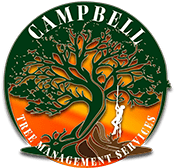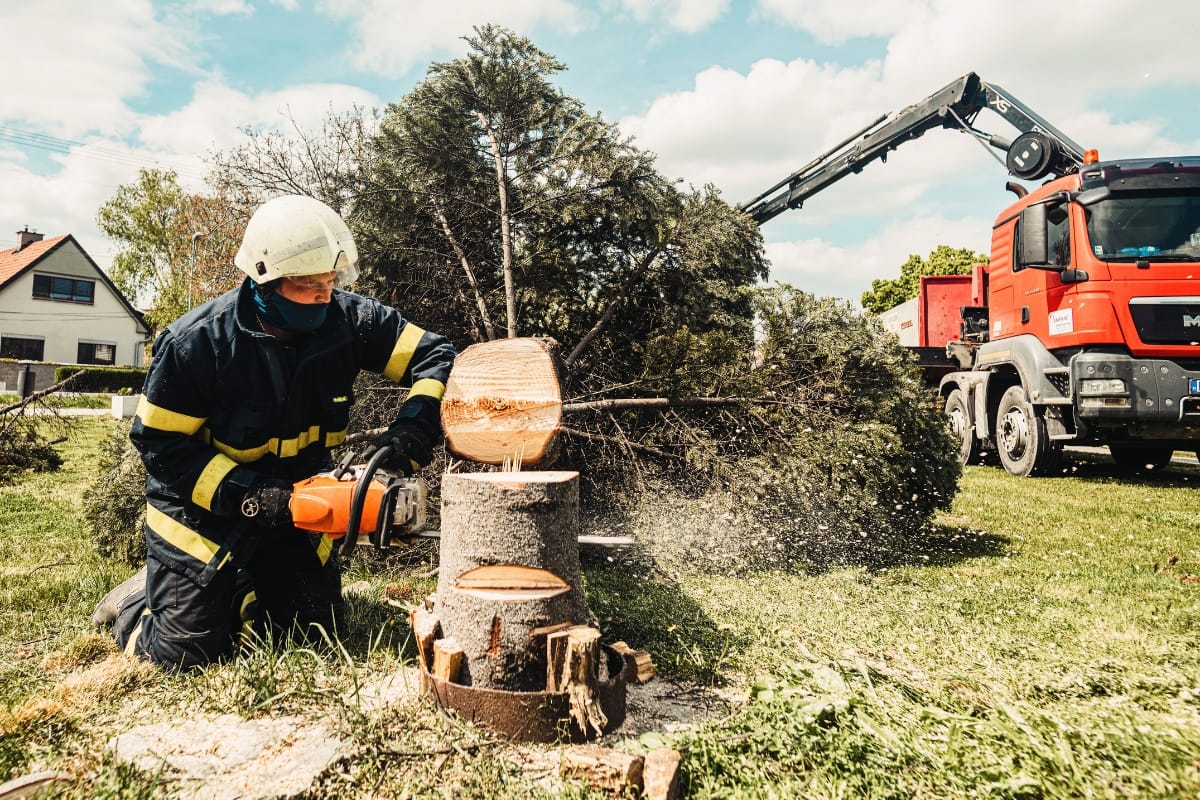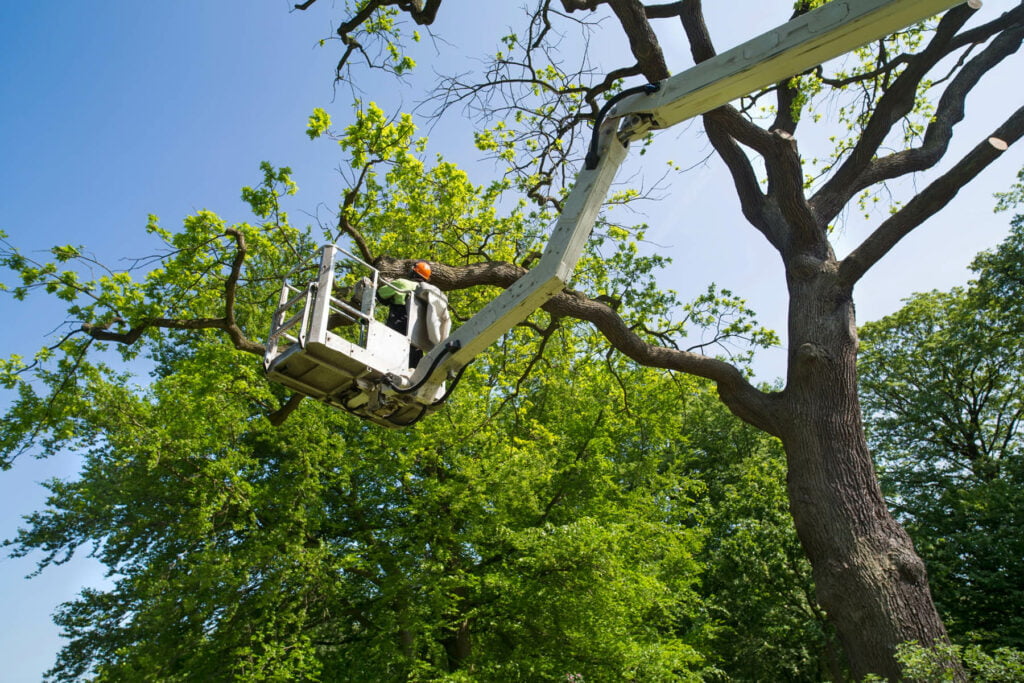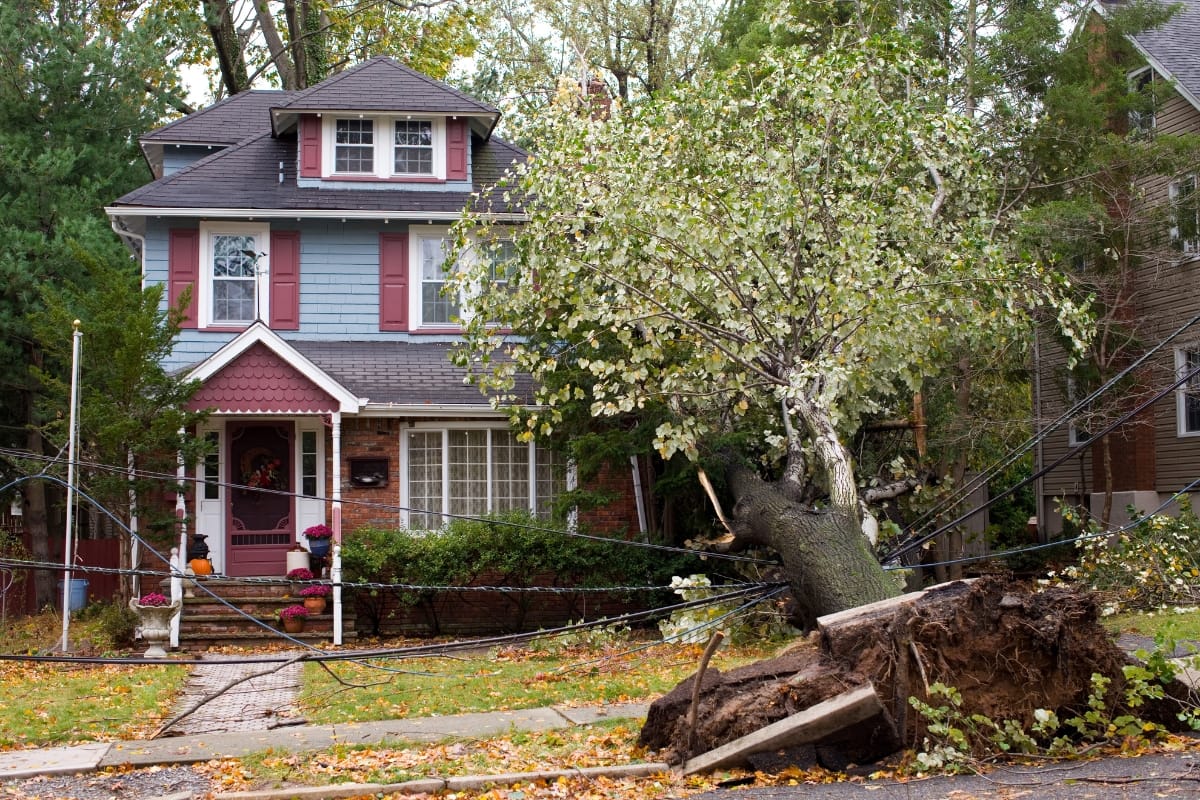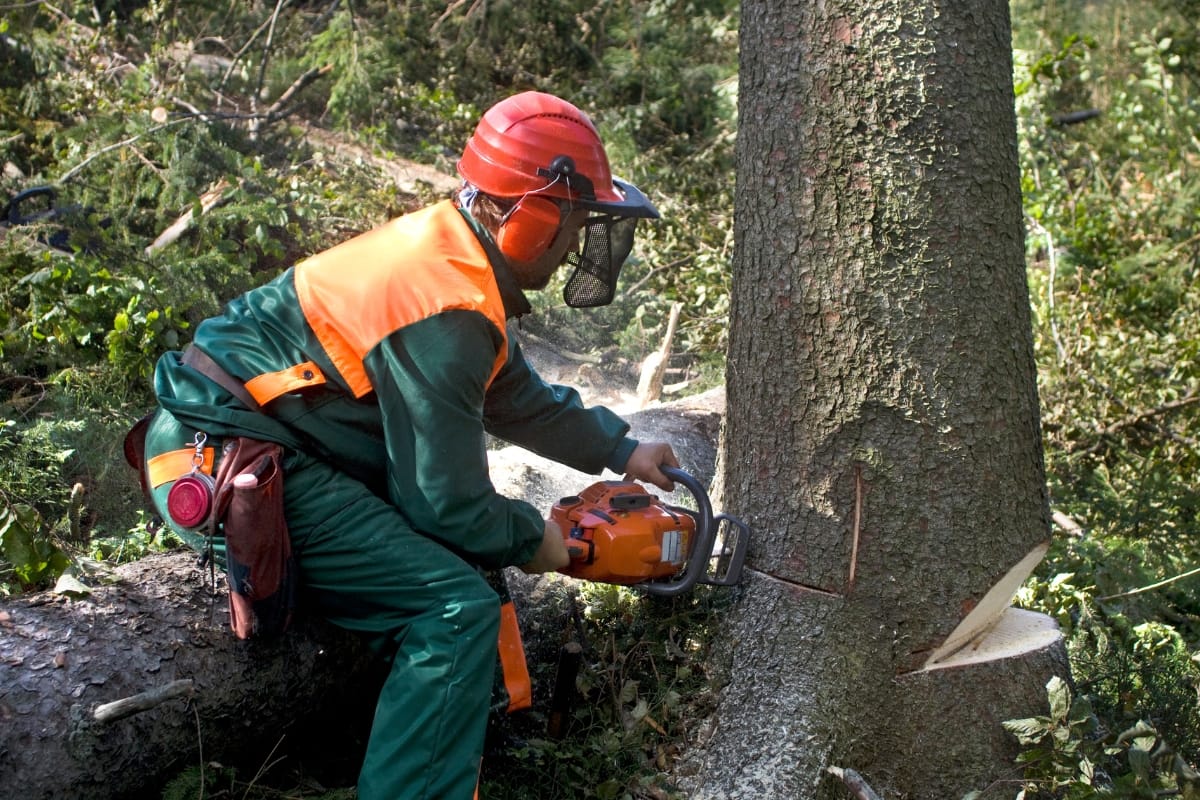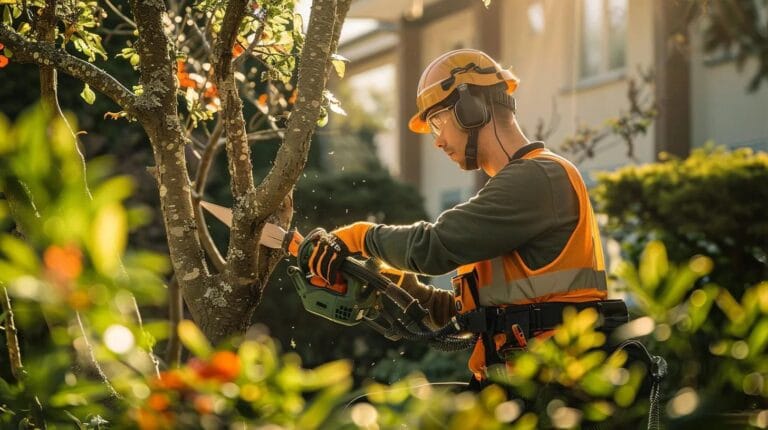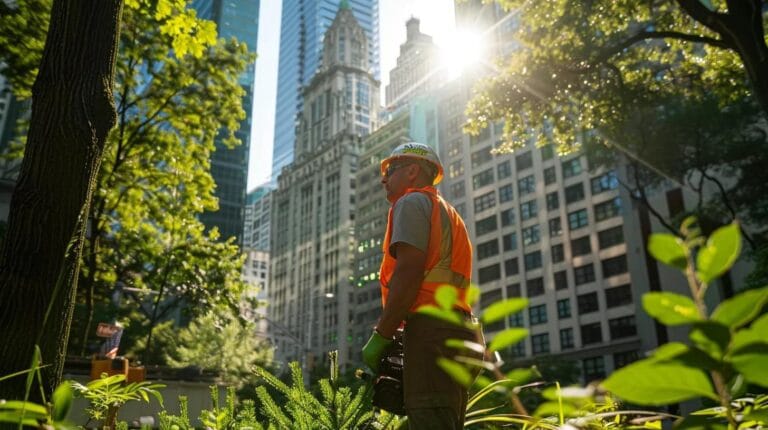Dead trees pose a significant threat to Powder Springs homeowners, especially as hurricane season approaches with its potential for devastating winds and severe storms. These weakened giants can become dangerous projectiles during extreme weather, potentially crashing into homes, vehicles, or power lines, causing thousands of dollars in damage and putting your family’s safety at risk.
With Georgia’s hurricane season typically running from June through November, now is the critical time to assess your property for dead, diseased, or structurally compromised trees that could become hazardous during the next major storm. Professional dead tree removal not only protects your property investment but also provides peace of mind, ensuring that your home and loved ones are safeguarded against one of nature’s most unpredictable forces.
Protect Your Home with Fast, Professional Dead Tree Removal
Importance of Dead Tree Removal Before Hurricane Season
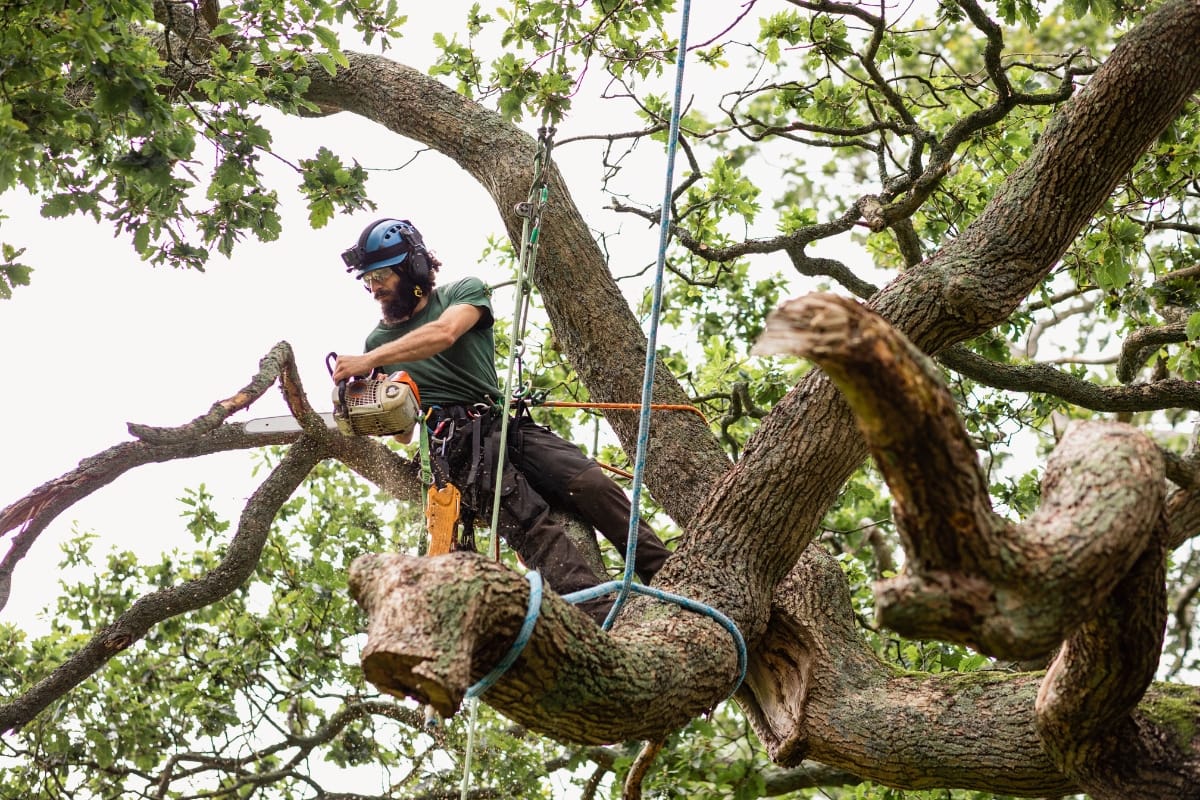
Dead tree removal isn’t just about keeping your yard looking nice. It’s about keeping your family and property safe when hurricane season hits Powder Springs. Dead trees are accidents waiting to happen, and when strong winds start blowing, these weakened trees become serious hazards.
When a tree dies, it loses the strength that kept it standing through countless storms. The wood becomes brittle, roots rot away, and the whole structure becomes unstable. What once weathered moderate winds can now fall over in a regular thunderstorm, let alone a hurricane. These falling trees don’t just make a mess in your yard. They crash through roofs, smash cars, take out power lines, and can seriously injure or kill someone.
The timing matters too. Hurricane season in Georgia runs from June through November, giving homeowners a narrow window to prepare. Once a storm warning is issued, tree removal companies get booked solid, and many won’t take on dangerous jobs during severe weather. Waiting until the last minute often means waiting until after the storm passes and dealing with emergency removal costs that can be two or three times higher than preventive removal.
Dead trees also create problems beyond your property line. When they fall across roads, they block emergency vehicles from reaching people who need help. They can take down power lines that serve entire neighborhoods, leaving families without electricity for days or weeks. Insurance companies are getting stricter about covering damage from trees that homeowners should have known were dangerous.
The good news is that identifying problem trees isn’t complicated. Look for trees without leaves during growing season, visible decay or fungus, large dead branches, or trees leaning at unusual angles. Cracks in the trunk, exposed roots, or signs of insect damage are also red flags.
Professional tree removal might cost a few hundred to a few thousand dollars depending on the size and location of the tree. Compare that to tens of thousands in property damage, potential injuries, and the headache of dealing with insurance claims after a storm. Taking care of dead trees before hurricane season is simply smart homeownership.
Assessing the Risk: Identifying Dead or Dying Trees on Your Property
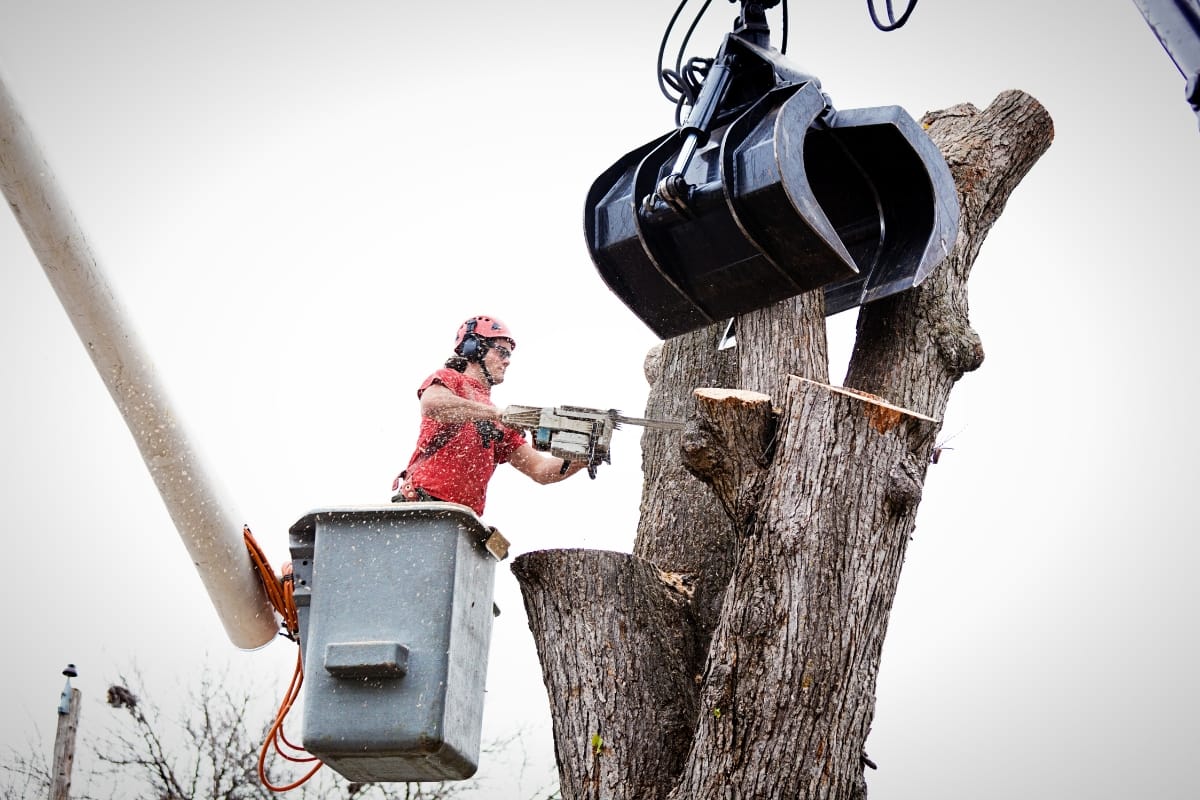
Walking around your yard and actually looking at your trees might seem obvious, but most homeowners don’t really examine them until something goes wrong. Before you call a tree service, spend some time checking what you’ve got growing on your property.
Start with the obvious stuff. If it’s spring or summer and a tree has no leaves, that’s a dead giveaway. But dying trees aren’t always that clear cut. Look for branches that are bare when everything else is green, or sections where the leaves look smaller, discolored, or just unhealthy compared to the rest of the tree.
Check the bark next. Healthy bark should look relatively smooth and consistent for that type of tree. Watch out for areas where the bark is peeling off in large sections, strange discoloration, or any kind of mushroom or fungus growing directly on the trunk. These fungi are basically the tree’s way of announcing that it’s rotting from the inside out. Walk around the base of each tree and look at the roots. You shouldn’t see large roots sticking up out of the ground or areas where the soil has washed away and exposed the root system. Soft, spongy wood around the base means decay has started. If you can push on the trunk near ground level and it feels soft or hollow, that tree needs to come down.
Pay attention to the tree’s posture too. Trees that have started leaning significantly, especially after recent storms, are telling you they’re losing their grip. Even a slight lean can become dangerous when hurricane force winds hit. Don’t forget about the obvious damage. Large dead branches hanging in the canopy, cracks running up the trunk, or splits where the tree has partially broken but is still standing are all serious warning signs.
Take pictures of anything that looks questionable. When you call a tree service, these photos help them understand what they’re dealing with before they come out. Some problems are urgent and some can wait, but a professional can help you figure out which is which. The bottom line is simple: if something about a tree looks off, it probably is. Trust your instincts and get it checked out.
Hiring Professional Arborists: Ensuring Safe and Efficient Tree Removal

Tree removal isn’t a DIY project, especially when you’re dealing with dead trees that could fall unpredictably. Sure, you might save some money trying to do it yourself, but the risks just aren’t worth it. Professional arborists have the right equipment and know how to use it safely.
Think about what’s involved in removing a large tree. You need chainsaws, ropes, pulleys, and sometimes even cranes. Most homeowners don’t have this stuff sitting in their garage, and renting it for a one-time job gets expensive fast. More importantly, using this equipment wrong can get you killed or seriously injured.
Professional tree services also know how to take down trees in sections without damaging your house, fence, or the neighbor’s property. They can rig branches to lower them safely instead of just cutting and hoping they fall in the right direction. When you’re dealing with a dead tree near your home, precision matters.
Insurance is another big reason to hire professionals. Legitimate tree services carry liability insurance and worker’s compensation. If something goes wrong and your house gets damaged, or if a worker gets hurt, you’re covered. Try to remove a tree yourself and cause damage, and your homeowner’s insurance might not pay for it.
Don’t just hire the first company that shows up at your door, though. Get at least three quotes and ask for proof of insurance and certification. A good arborist will be happy to show you their credentials. Check references too, especially from jobs they’ve done recently in Powder Springs. Watch out for door-to-door tree services that show up after storms offering great deals. These fly-by-night operations often do shoddy work, damage your property, and disappear when you try to get them to fix problems.
A professional should come out and look at the job before giving you a price. They’ll explain exactly what they plan to do, how long it will take, and what happens to the wood and debris afterward. Some companies will chip everything up and haul it away, while others might leave you with a pile of logs. Good tree services stay busy, so don’t wait until the last minute to book them. Schedule removal work well before hurricane season starts.
Obtaining Necessary Permits for Tree Removal in Powder Springs
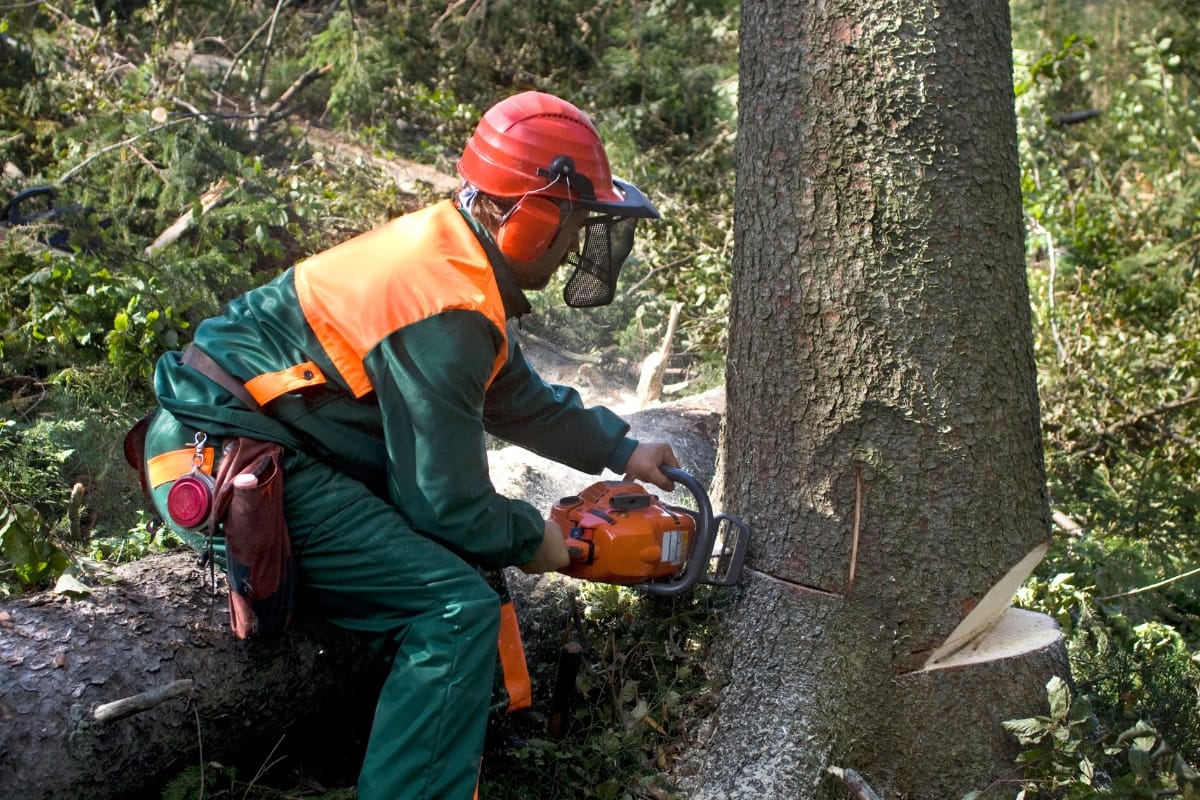
If you’re planning to remove a dead or damaged tree in Powder Springs, don’t jump straight into the work without checking local rules. The city has ordinances in place to protect certain types of trees, especially those that are large, part of a designated conservation area, or considered historically significant. Taking down a protected tree without proper permission can lead to fines, legal headaches, or even requirements to replant—which can throw off your timeline, especially if you’re trying to get ahead of hurricane season.
Start by contacting the Powder Springs Planning and Zoning Department or checking their official website. They can tell you whether the tree you want to remove requires a permit. In most cases, the permit application will ask for basic details, such as the location of the tree, its species, trunk diameter, and the reason for removal. If the tree is dead or poses a safety risk, you may need to attach a report from a certified arborist to back up your request.
Photos of the tree are usually required, and it’s a good idea to mark the tree clearly on your property before any city representative or inspector comes out. Be ready to wait a bit—approval can take anywhere from a few days to several weeks, depending on the volume of applications and whether additional documentation is needed. This is why it’s smart to start the process well ahead of time, ideally a month or more before the height of hurricane season.
Once your permit is approved, hold onto a copy for your records, and make sure your tree removal company follows all the conditions listed in the permit. Some permits may require you to replant a tree elsewhere on your property or dispose of the debris in a specific way. Having everything in order ensures your project moves forward without unexpected delays or penalties.
Taking the time to get the right permits not only keeps you in compliance with local law—it also shows that you’re handling the job responsibly. Whether you’re removing a hazard or clearing space for safety, doing it the right way protects your property and your peace of mind.
Disposal and Recycling Options for Removed Trees

Once the tree service finishes cutting down your dead trees, you’re left with a big pile of wood and debris. What you do with it depends on how much you have, what kind of trees they were, and how much work you want to put into it.
Most tree removal companies will haul everything away as part of their service, but that’s not always your cheapest option. Ask upfront what removal and cleanup costs, because some companies charge extra for hauling while others include it in their base price.
If you’ve got a fireplace or fire pit, keeping some of the wood makes sense. But here’s the thing about dead trees: the wood might already be partially rotted, which means it won’t burn well or last long. Oak, hickory, and other hardwoods are worth keeping if they’re still solid. Pine and other softwoods burn fast and create more creosote buildup in chimneys. Wood that’s going to be firewood needs to be cut, split, and dried properly. Even dead trees often have moisture in them. You’re looking at six months to a year of seasoning time before most wood is ready to burn safely.
The branches and smaller pieces usually get run through a wood chipper. Those wood chips make decent mulch for flower beds and around other trees, though fresh chips can tie up nitrogen in the soil temporarily. Let them age for a few months before putting them around plants, or mix them with some nitrogen fertilizer.
Some tree services will let you keep the chips for free since it saves them disposal costs. Just make sure you actually want several cubic yards of wood chips before you agree to keep them. That stuff piles up fast. If the wood is too far gone to use for anything, check with Powder Springs about yard waste pickup or drop-off locations. Some areas have specific days for bulk yard waste, while others have designated sites where you can dump organic material.
Don’t just pile everything by the curb and hope the city picks it up. Most places have rules about how yard waste needs to be bundled or bagged, and large logs usually require special pickup arrangements. One last thing: if your trees died from disease or pest problems, don’t move that wood around. Diseased wood can spread problems to healthy trees.
Protecting Your Home During the Tree Removal Process
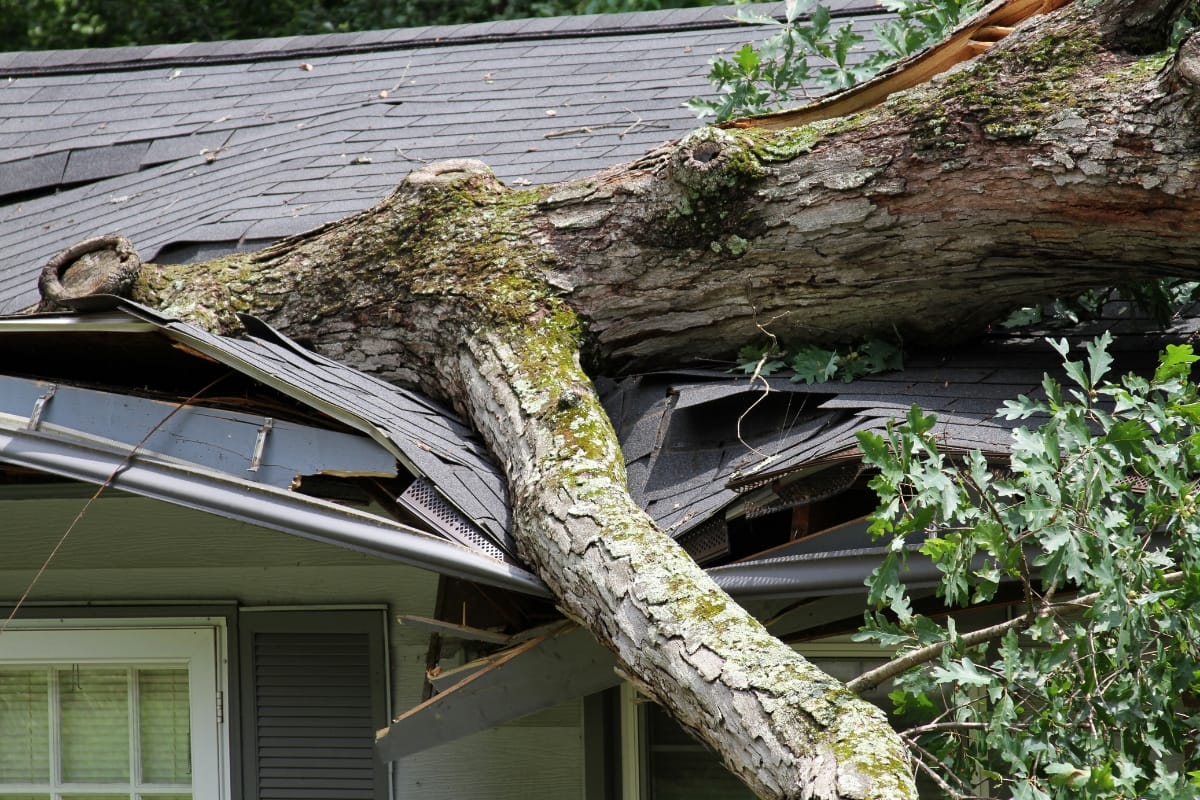
Just because you hired professionals doesn’t mean you can sit back and ignore what’s happening in your yard. Tree removal is messy, loud work, and even the best crews can’t prevent every bit of debris from flying around.
Start by moving anything you care about out of the way. That means cars, patio furniture, grills, planters, garden decorations, and anything else that could get dinged by falling branches or equipment. Don’t just move stuff a few feet away either. Tree limbs can bounce unpredictably when they hit the ground, and wood chips shoot out from chippers in all directions.
If you’ve got flower beds or shrubs near the work area, throw some old tarps or sheets over them. Wood chips and sawdust will smother plants if they pile up thick enough. It’s easier to prevent the mess than to clean it up later. Close the windows and doors on the side of your house where they’re working. Tree removal creates a lot of dust, and wood chips have a way of finding their way into houses through the smallest openings. If you’ve got central air running, consider turning it off during the work so you don’t suck debris into your system.
Talk to the crew chief before they start cutting. Ask where they plan to drop the big pieces and make sure that works for you. Sometimes they can adjust their plan to avoid your favorite flower bed or keep debris away from your neighbor’s fence.
Watch out for power lines. Professional crews know to stay clear, but accidents happen. If you see workers getting too close to electrical lines, speak up. Don’t assume they see what you see. Keep kids and pets inside during the work. Tree removal sites are dangerous, with chainsaws running, heavy equipment moving around, and chunks of wood falling from overhead. Even well-trained pets can get spooked and run into trouble.
If something does get damaged during the work, take pictures right away and point it out to the crew chief. Most reputable companies will make things right, but you need to document problems while they’re still on site. Don’t wait until after they leave to notice that your fence got dented or your flowers got crushed.
Preventative Measures: Maintaining Tree Health to Minimize Risks
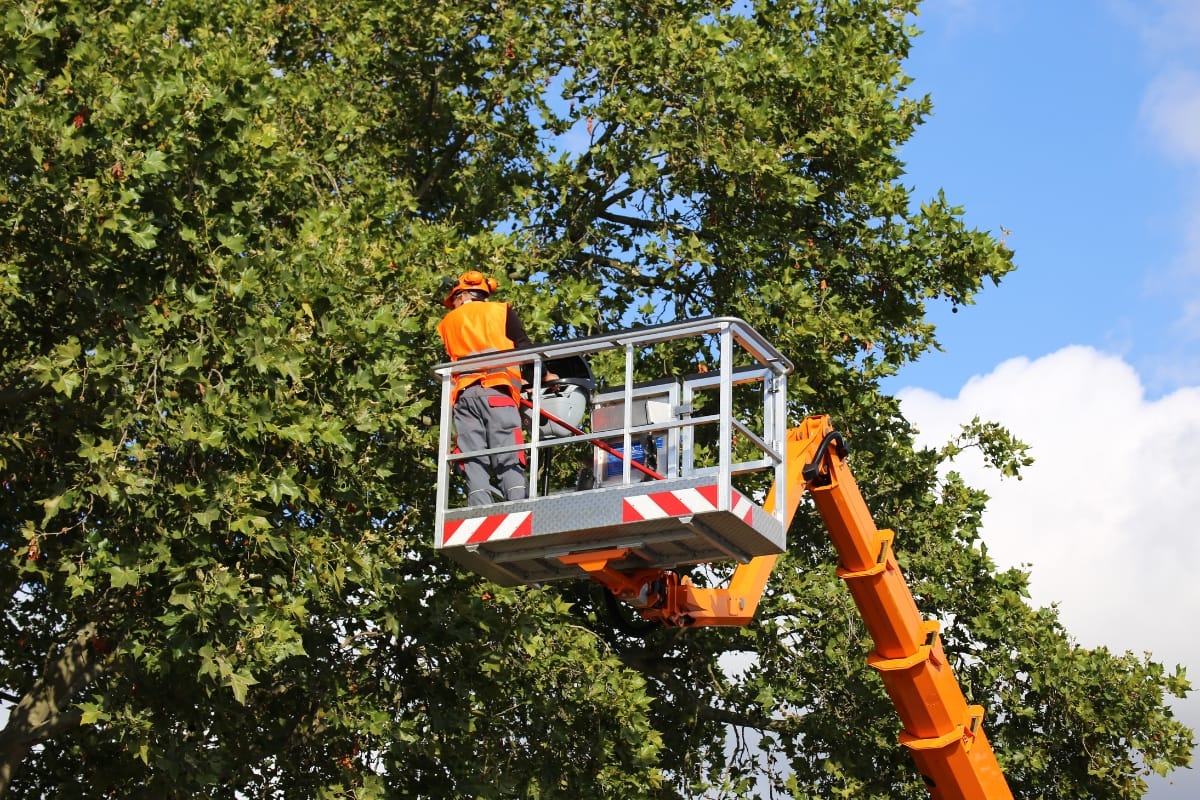
Getting rid of your dead trees is just the first step. If you want to avoid going through this whole process again in a few years, you need to take better care of the trees you’re keeping.
Regular pruning makes a huge difference in how well trees handle storms. Those long, skinny branches that stick way out from the trunk are the first things to break when the wind picks up. A good arborist can thin out the canopy so wind passes through instead of catching the tree like a sail. This doesn’t mean hacking off huge chunks of the tree. Good pruning removes specific branches to improve the tree’s structure.
Don’t wait for problems to show up before you call someone to look at your trees. Having an arborist check your trees every couple of years can catch issues early, when they’re still fixable. Diseases and pest problems are much easier to treat before they spread throughout the whole tree.
Watering matters more than most people realize, especially during dry spells. Trees that are stressed from drought are more likely to develop problems and less able to fight off diseases. But don’t just spray the trunk with a hose. Tree roots spread out much wider than the branches, so you need to water a large area around each tree.
Mulch helps trees in several ways. It keeps moisture in the soil, prevents grass from competing with tree roots, and breaks down to add nutrients to the soil. Just don’t pile mulch up against the trunk like a volcano. That can cause rot problems and give insects and rodents a place to nest. Pay attention to what’s happening around your trees too. Don’t drive heavy equipment over the root zones or pile construction materials there. Tree roots are closer to the surface than you think, and compacting the soil makes it hard for them to get water and oxygen.
If you’re planning to plant new trees, choose varieties that do well in Georgia and can handle wind. Some trees are just more prone to storm damage than others. Fast-growing trees like Bradford pears might look good quickly, but they’re weak and break easily. Stick with native species that have proven they can handle what nature throws at them.
Conclusion: Safeguarding Your Powder Springs Home Against Tree Hazards
Taking care of dead trees before hurricane season isn’t something you want to put off until storm warnings start hitting the news. By then, it’s too late to get on anyone’s schedule, and you’re left hoping for the best when the winds start howling. The smart move is to walk your property now, identify problem trees, and get them removed while you have time to shop around for a good crew.
Don’t let a dead tree turn your next hurricane into a disaster that could have been prevented. Campbell Tree Management Services has been helping Powder Springs homeowners protect their properties for years, and they know exactly what to look for when handling storm damage. Give us a call at (770) 286-8058 or request a free quote and get those dangerous trees taken care of before the weather turns nasty. Your family’s safety and your home’s protection are worth that phone call.
